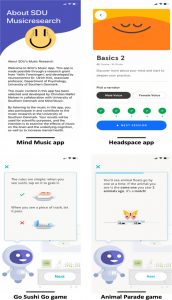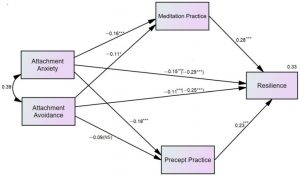Mindfulness Reduces the Impact of Cyber-Ostracism on Adolescents
By John M. de Castro, Ph.D.
“The current studies support the relevance of mindfulness in addressing the substantial problem of ostracism. Among other benefits, fostering mindfulness in a variety of contexts may help reduce personal and social costs associated with this type of incivility.” – Alex Ramsey
Humans are social animals. This is a great asset for the species as the effort of the individual is amplified by cooperation. In primitive times, this cooperation was essential for survival. But in modern times it is also essential, not for survival but rather for making a living and for the happiness of the individual. This deep need for positive social interactions heightens the pain of social rejection and ostracism. Cyber-ostracism is defined as the experience of being ignored and excluded by peers or groups on the Internet. “Ostracism, or being excluded and ignored, is a detrimental experience for the target of ostracism because it harms the target’s relational needs of belonging, self-esteem, meaningful existence, and control, along with worsening the target’s mood” (Jones et. Al. 2019).
Mindfulness has been found to increase prosocial behaviors such as altruism, compassion and empathy and reduce antisocial behaviors such as violence and aggression. Mindfulness affects the individual’s tendency to reject and ostracize others. There is a need to examine how mindfulness affects the effects of cyber-ostracism.
In today’s Research News article “Different Roles of Rumination and Mindfulness among Cyber-Ostracized Adolescents’ Psychological Well-Being.” (See summary below or view the full text of the study at: https://www.ncbi.nlm.nih.gov/pmc/articles/PMC8834701/ ) Li and colleagues recruited adolescents from the 7ty to 9th middle school grades and had them complete a questionnaire at the beginning of the spring semester and 3 months later measuring cyber-ostracism, rumination, mindfulness, and psychological well-being.
They found that the higher the levels of mindfulness the lower the levels of cyber-ostracism and rumination and the higher the levels of well-being and the higher the levels of cyber-ostracism the lower the levels of well-being and the higher the levels of rumination. Employing structural modelling they found that cyber-ostracism was associated with lower well-being directly and indirectly by increasing rumination which in turn decreased well-being. Mindfulness moderated both paths reducing both the direct and indirect paths between cyber-ostracism and psychological well-being.
Being ostracized on line damages the psychological well-being of adolescents. It hurts to be ignored and shunned, especially during the vulnerable teen years. But mindfulness can help and reduce the harm caused by the ostracism. This suggests that mindfulness practices may help adolescents weather difficulties in participating in online intercourse.
“Ostracism (i.e., the phenomenon of being rejected or neglected by an individual or a group) brings suffering to individuals. Mindfulness is conducive to emotional regulation and coping with stress, which may play a beneficial role in alleviating ostracism.” – Jing Chen
CMCS – Center for Mindfulness and Contemplative Studies
This and other Contemplative Studies posts are also available on Twitter @MindfulResearch
Study Summary
Li, X., Mu, W., Wang, Y., Xie, P., Zhang, Y., & Liu, T. (2022). Different Roles of Rumination and Mindfulness among Cyber-Ostracized Adolescents’ Psychological Well-Being. International journal of environmental research and public health, 19(3), 1222. https://doi.org/10.3390/ijerph19031222
Abstract
Previous research has confirmed the harmful effects of cyber-ostracism on adolescents. However, research that has investigated the effect of cyber-ostracism on adolescents’ psychological well-being and the underlying mechanisms of this influence remains scarce. Using a sample of 421 Chinese adolescents, this study examined the short-term effect of cyber-ostracism on adolescents’ psychological well-being, along with the mediating effect of rumination. Mindfulness is considered as a moderator influencing this underlying mechanism. Questionnaires regarding cyber-ostracism, rumination, and mindfulness were administered at the beginning of the spring semester. Psychological well-being was assessed three months later. The study found that cyber-ostracism significantly and negatively predicted adolescents’ psychological well-being. As shown by the mediation analysis, rumination partly mediated the effect of cyber-ostracism on adolescents’ psychological well-being. Moderated mediation analysis indicated that mindfulness played a moderating role in the relationship between cyber-ostracism and adolescents’ psychological well-being as well as the relationship between cyber-ostracism and rumination. Specifically, mindfulness would decrease the negative impact of cyber-ostracism on adolescents’ psychological well-being. This study uncovers the short-term effect of cyber-ostracism on adolescents’ psychological well-being and accentuates the underlying mechanisms of this effect, which has substantial implications for interventions and practices to reduce the detrimental effects of cyber-ostracism among adolescents.
https://www.ncbi.nlm.nih.gov/pmc/articles/PMC8834701/









